City History
The history of Dresden dates back several centuries. It was first mentioned in writing in 1206, and before that, there was a village called Drežďany in this place.
Curiously, the name of the village, as well as the city itself, came from the Slavic language. From ancient Sorbian, it translates as “people of floodplain forests”.
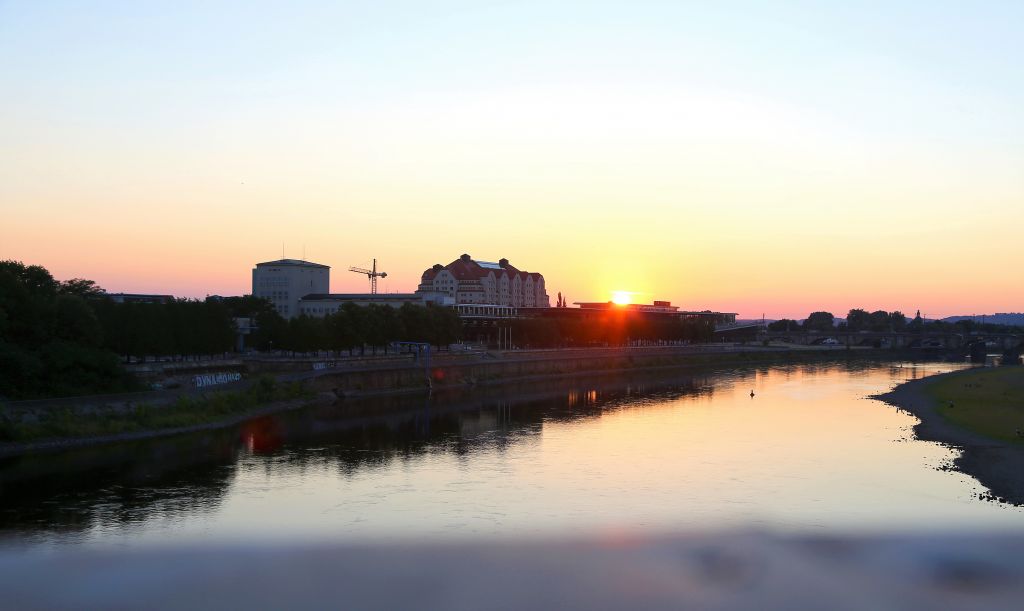
Since the foundation of the city, it developed quite gradually. Initially, Dresden was the capital of the Margraviate of Meissen, and in the 16th century, after Saxony joined it, Dresden became the capital of the Electorate of Saxony.
The city’s culture greatly exploded in the 18th century under Augustus the Strong. It was he who helped Dresden get its distinctive appearance in the Baroque style which is why the city is also called “Florence on the Elbe”. Thus, during the reign of Augustus the Strong, such famous buildings as the Zwinger Palace, the Cathedral of the Holy Trinity, Frauenkirche and others were erected.
Sadly, in 1945, Dresden’s downtown was completely destroyed and almost became a wasteland after the Anglo-American air force bombarded it at the end of World War II. According to various sources, between 100,000 and 200,000 people died at that time.
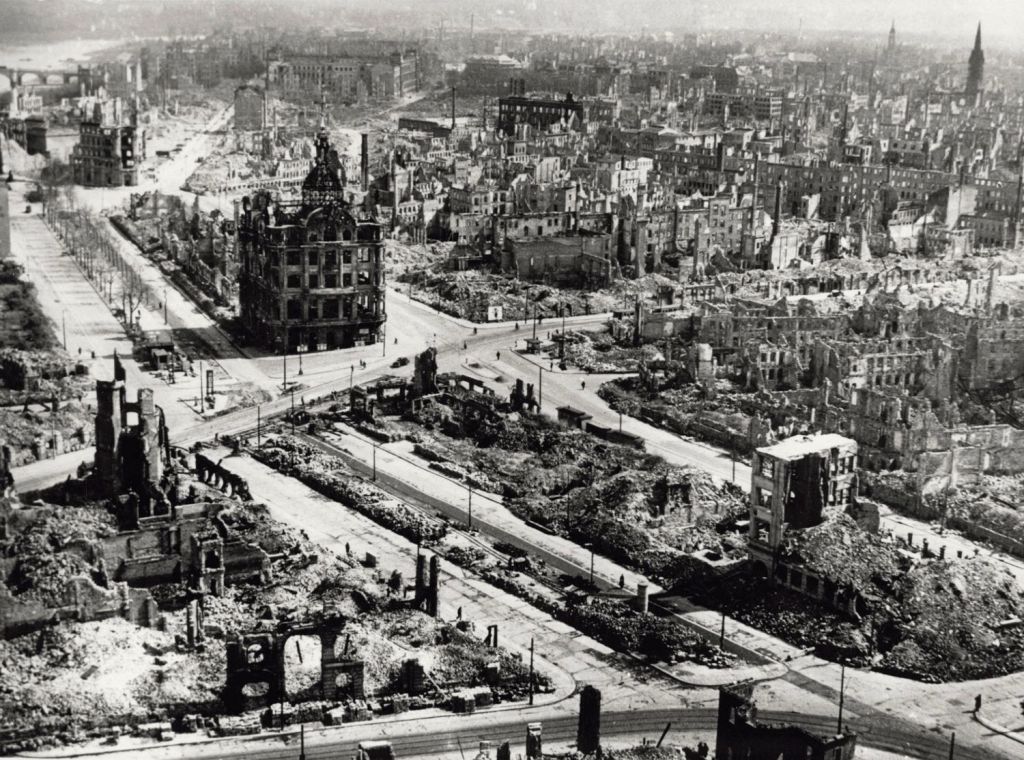
After such a brutal bombing, it took almost 40 years to restore the city. The authorities tried to use the surviving parts of the historic buildings as much as possible, and the missing parts were built anew.
Today, Dresden is one of the largest cities in Germany. Even after huge destruction, it managed to recover and become the point of culture and Baroque style.
Dresden Castle
One of the must-see places in the city is the Dresden Castle. And of course, we could not miss the chance to look at its beauty ourselves.
Previously, this building was the residence of the electors and kings. It is believed that the fortress was built right after the foundation of Dresden – in the early 13th century.
Of course, over such a long period, the castle has seen a lot of changes. Scientists assume that it was originally built in the Romanesque style, and in the 16th century, the residence “got” its famous Georgentor (which is translated as “George’s Gate”). The gate is named this way as it was built during the reign of George the Bearded.
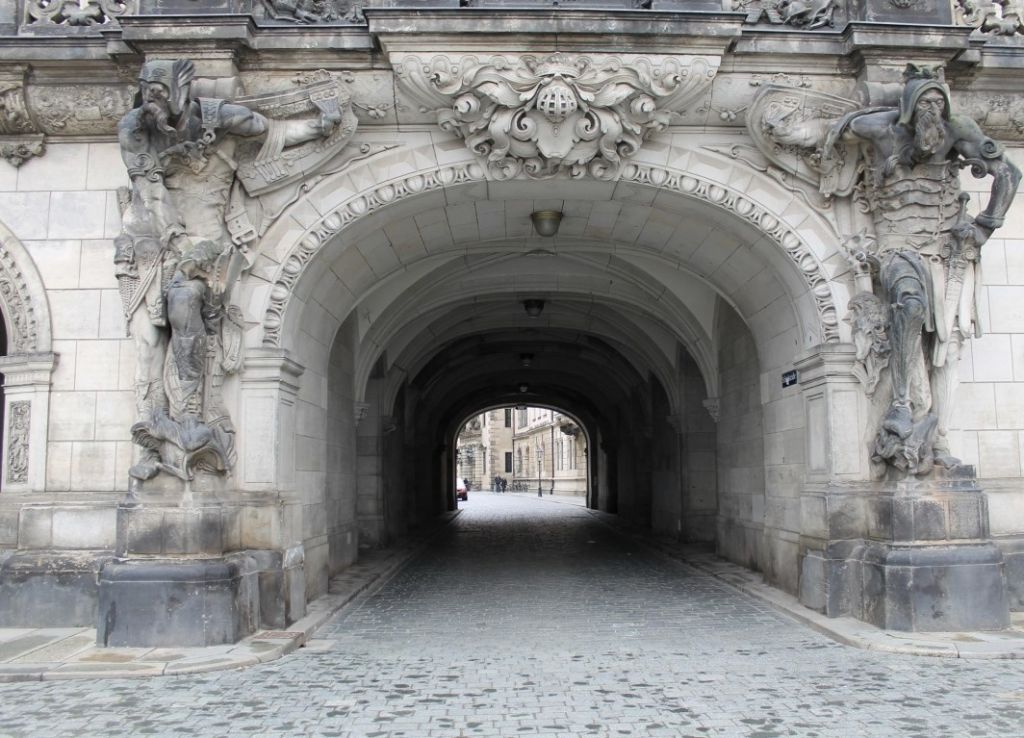
Then the whole building changed its style to the Renaissance. Today, in the castle’s appearance, we could also notice such styles as baroque, eclecticism and sgraffito.
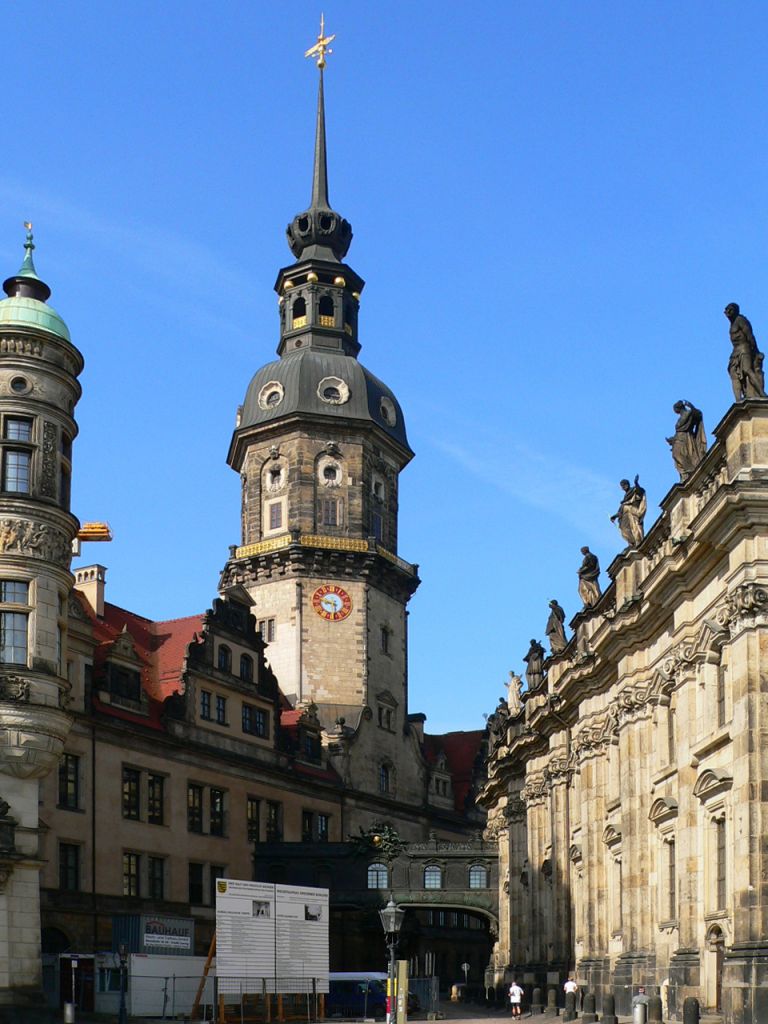
Currently, the castle has about 500 rooms. It houses thematic exhibitions of artists of both present and past.
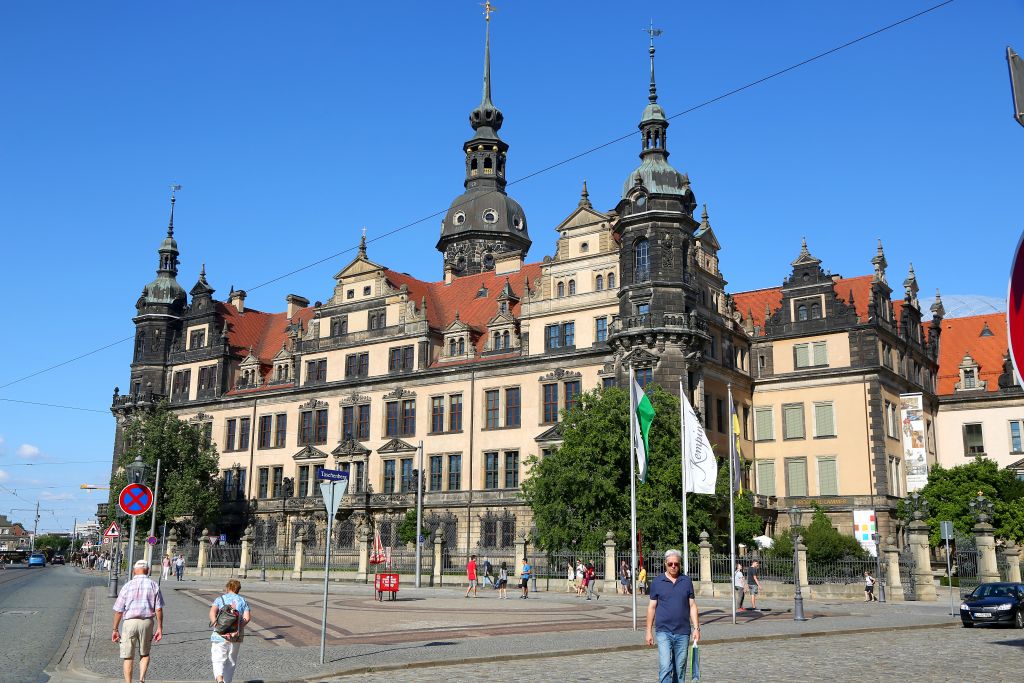
The “Procession of Princes” Panel
Walking a little to the east along Dresden Castle, we saw the panel called the Procession of Princes. This is the longest panel made of porcelain tile in the world. It looked really impressive – the panel consists of 25,000 tiles and is 102 meters long!
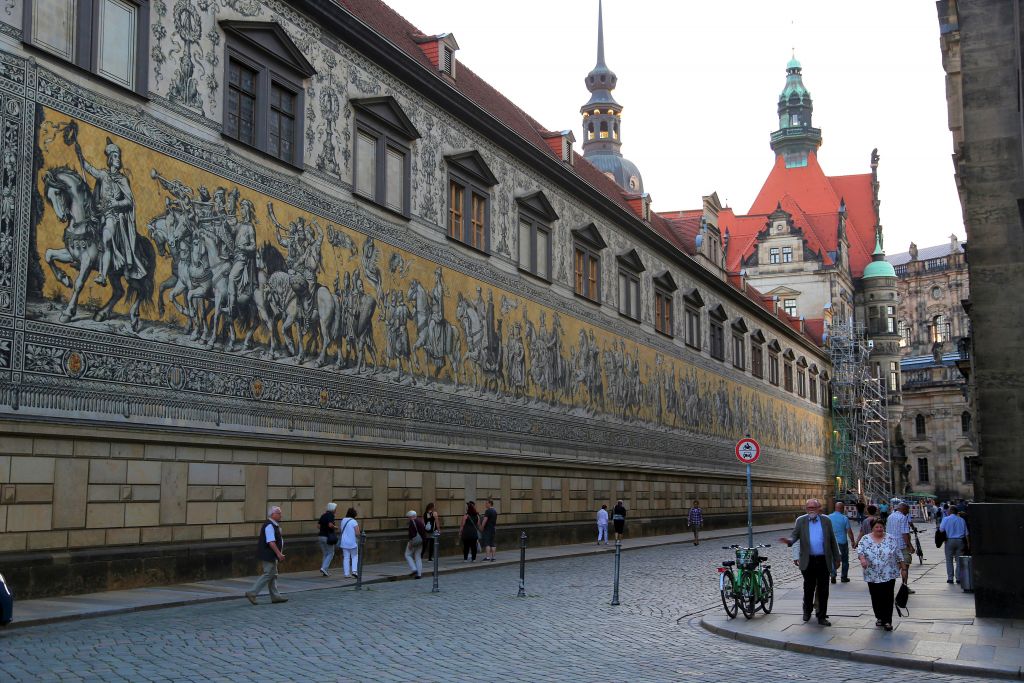
This work of art was originally created in the 19th century as a sgraffito painting. And later – in 1904-1907 – it was transferred to ceramic tile.
The composition of the panel is no less amazing than its appearance. The total number of characters is 94. They include not only kings, their subjects, scholars and artists but also the common people such as farmers, artisans and children. All these characters are figures who lived between 1127 and 1873.
Frauenkirche, or the Church of Our Lady
The Frauenkirche Church is considered one of the most important Lutheran churches in the city. It was built in the Baroque style in the 18th century. The church’s height is almost 92 meters, so it caught our eyes from far away and stood out against low surrounding buildings.
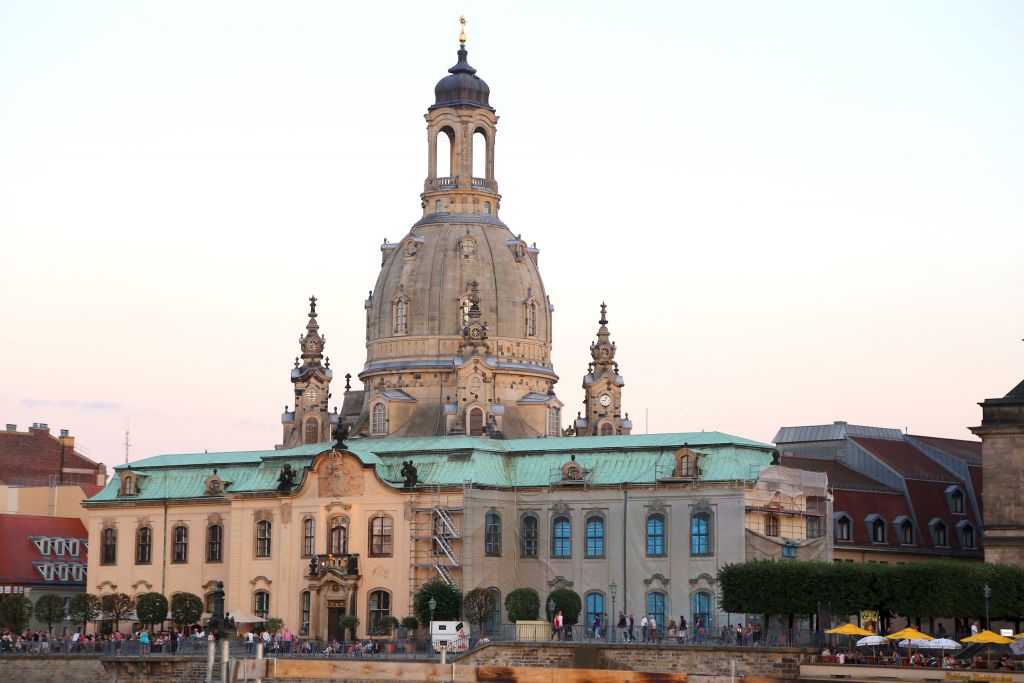
In 1945, the church, like many nearby structures, was completely destroyed. At that time, the authorities had no funds to restore it, so it was decided to keep it as a reminder to the descendants of this tragic event.
It was not until the 1990s that the Frauenkirche was restored to its original appearance. It was literally pieced together, and the official opening was only in 2005. The distinctive black stones on the building walls are original surviving stones used in restoration.
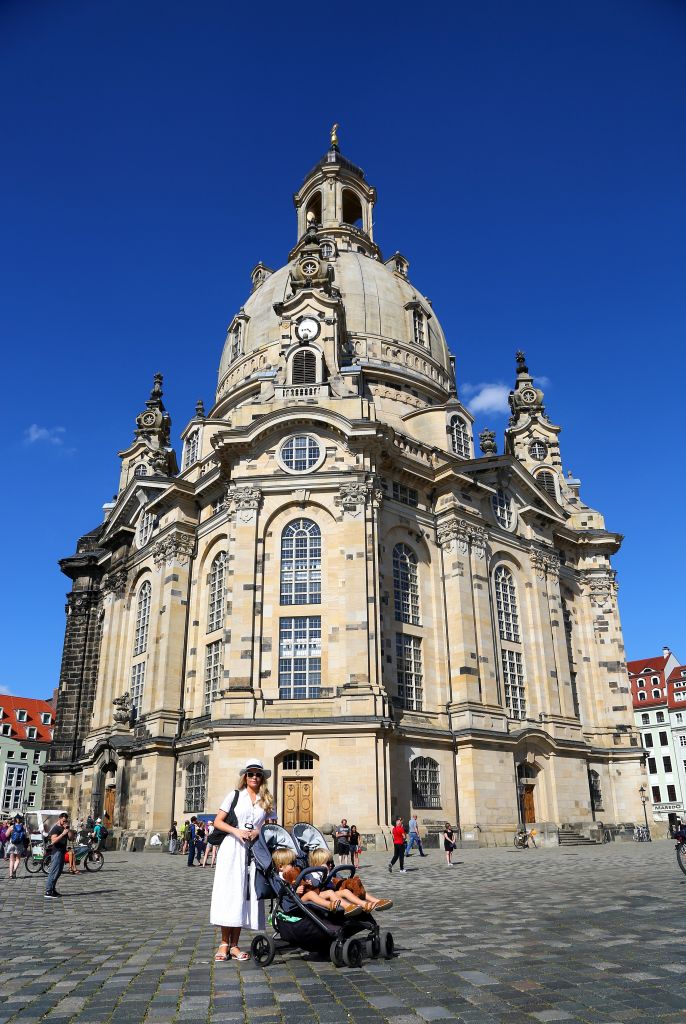
But this church s worth admiration not only from the outside – it is also impressive for its beauty and greatness inside. Tourists can enter the church completely for free, so we could get an eyeful of its luxurious interior decoration.
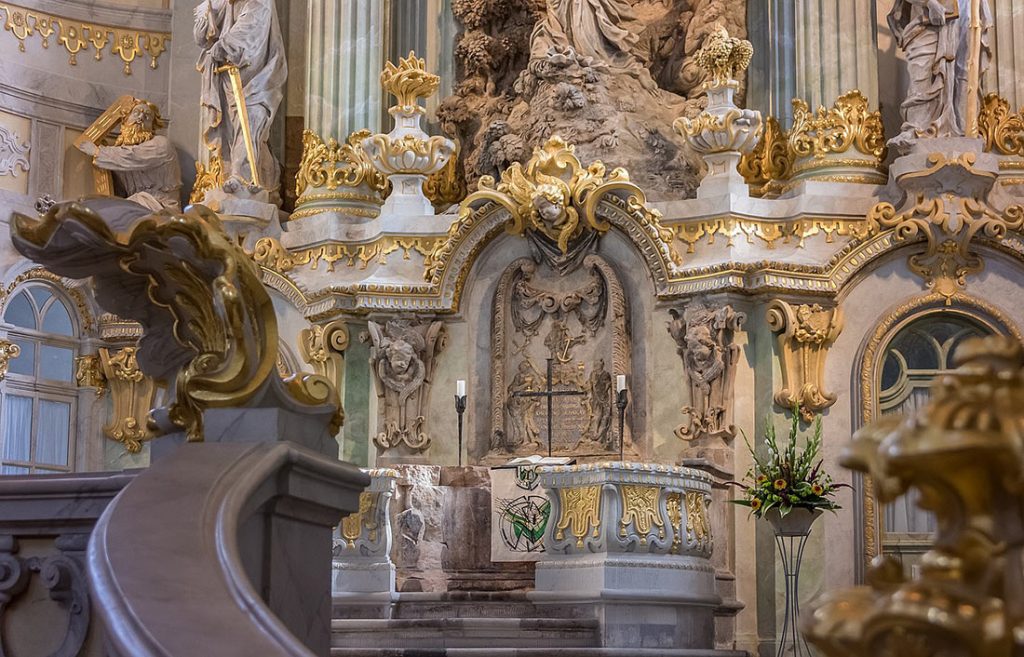
Next to the church, you can often see street musicians or living statues.
Brühl’s Terrace and the Elbe Promenade
After only a few hundred meters north of Frauenkirche, we reached the Brühl’s Terrace. The Brühl’s Terrace is a group of several pieces of architecture and one of the most popular tourist destinations in the city.
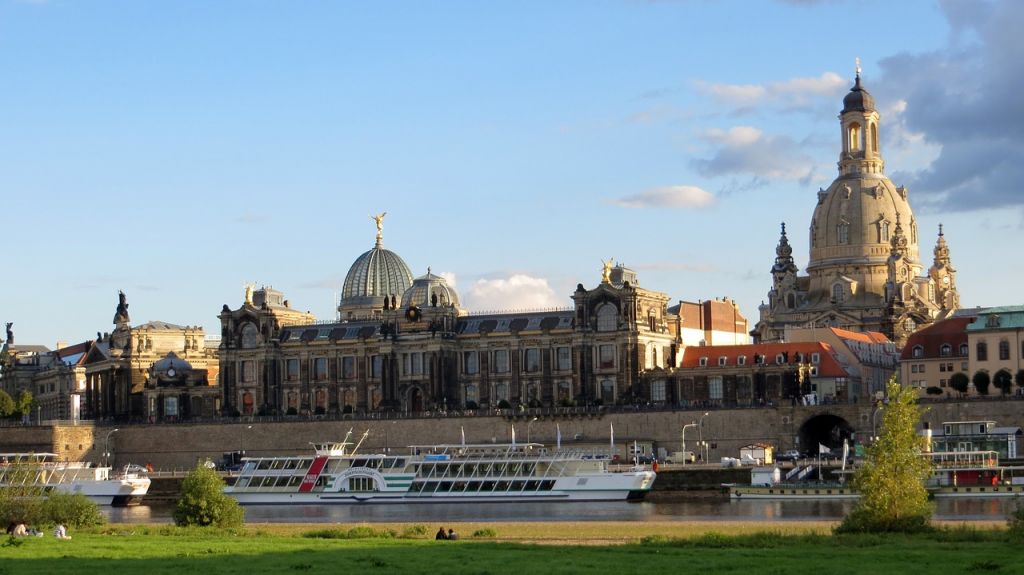
The terrace itself is located right on the bank of the Elbe River and stretches along its embankment for 500 meters.
Formerly, this group of buildings was a fortification structure, but in the 18th century, Count Heinrich von Brühl ordered these structures to be rebuilt for his own needs. As a result, an ensemble of a palace and park, named after its owner, was built.
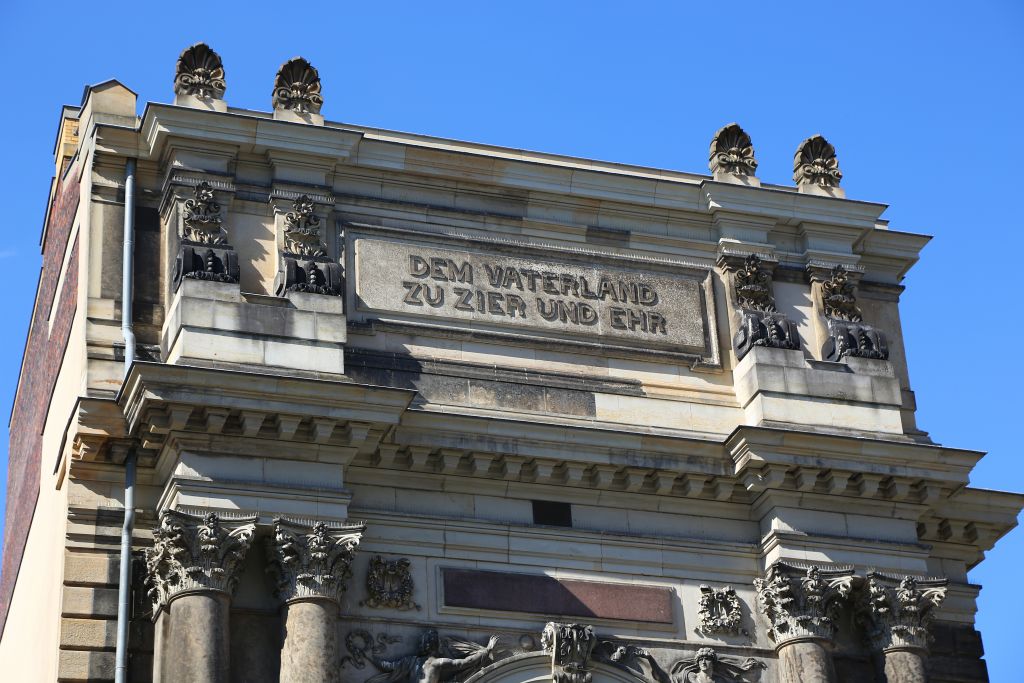
A century later, it was decided to make the terrace accessible to the public, and an embankment named Terrassenufer was built along the river. Goethe himself was fascinated by the beauty of the terrace and called it the “Balcony of Europe”. People call the place this way to this day.
At the same time, all of Brühl’s buildings were demolished and new buildings were built in their place. The only surviving legacy of the count is the triangular Brühl’s Garden in the eastern part of the terrace. There, you can see only two surviving monuments: they are the Dolphin Fountain and two Sphinx Sculptures.
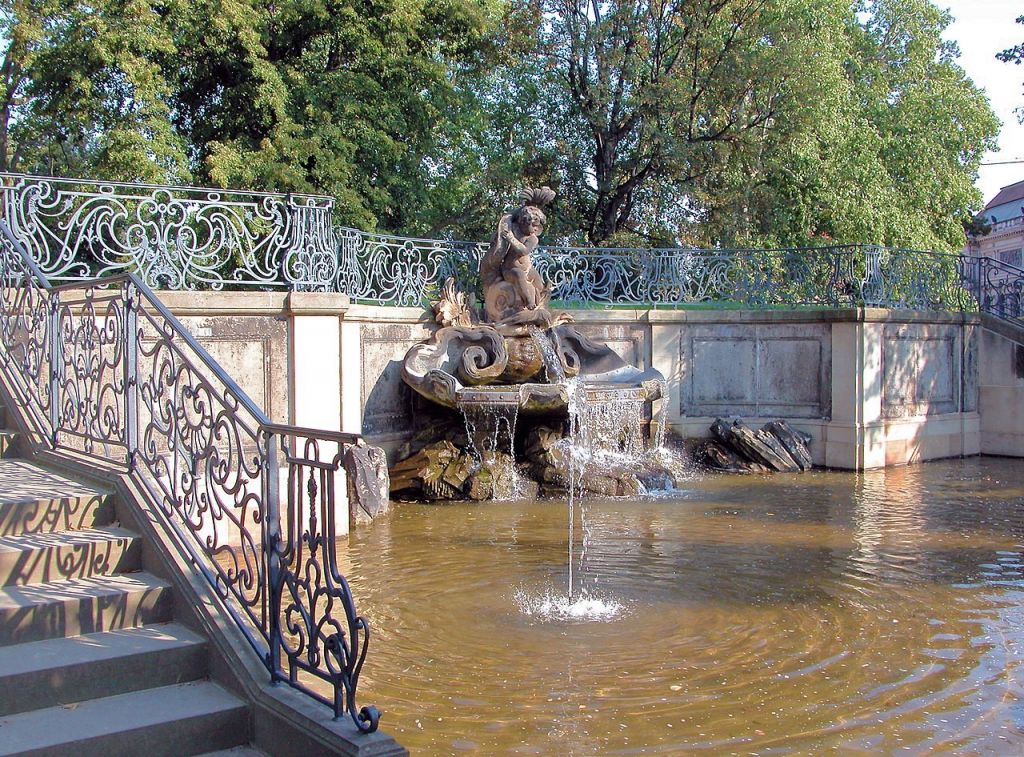
Today, the main building of the terrace has the Academy of Fine Arts, the Albertinum Museum, an art gallery.
Zwinger Palace
Of course, walking along such a historic city as Dresden, we could not help but went to see Zwinger, one of the most outstanding buildings designed in the Baroque style.
Today, the palace has three museums, but the building had a completely different purpose in the Middle Ages. In German, Zwinger means “cage”. Previously, this “cage” was located between the inner and outer walls of the city. And for a good reason! After defeating the first gate, the enemy was trapped between two walls and could be successfully defeated from there.
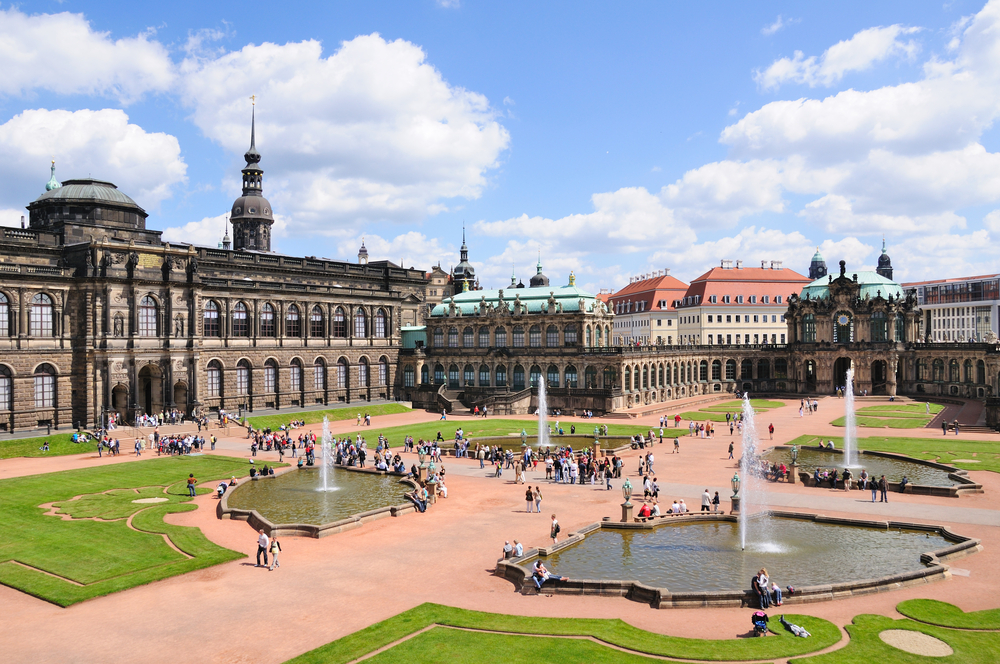
The palace itself consists of four buildings, shaping a large yard of square shape. The yard is symmetrically designed with fountains, flowerbeds and sculptures of antique figures.
The most photographed part of the palace is a crown of incredible sizes. It tops a huge gate, which is called precisely the Crown Gate.
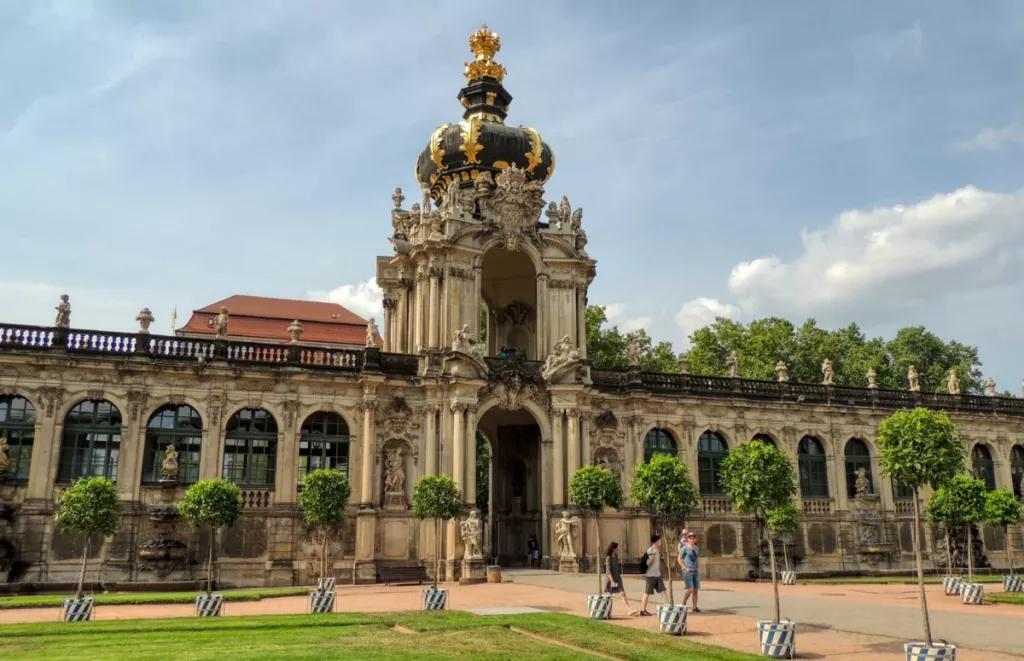
Hofkirche, or the Cathedral of the Holy Trinity
Several dozens of meters from Zwinger, there is the Catholic church called Hofkirche. It is quite difficult to miss it as the building is designed with great luxury and resembles a huge ship.
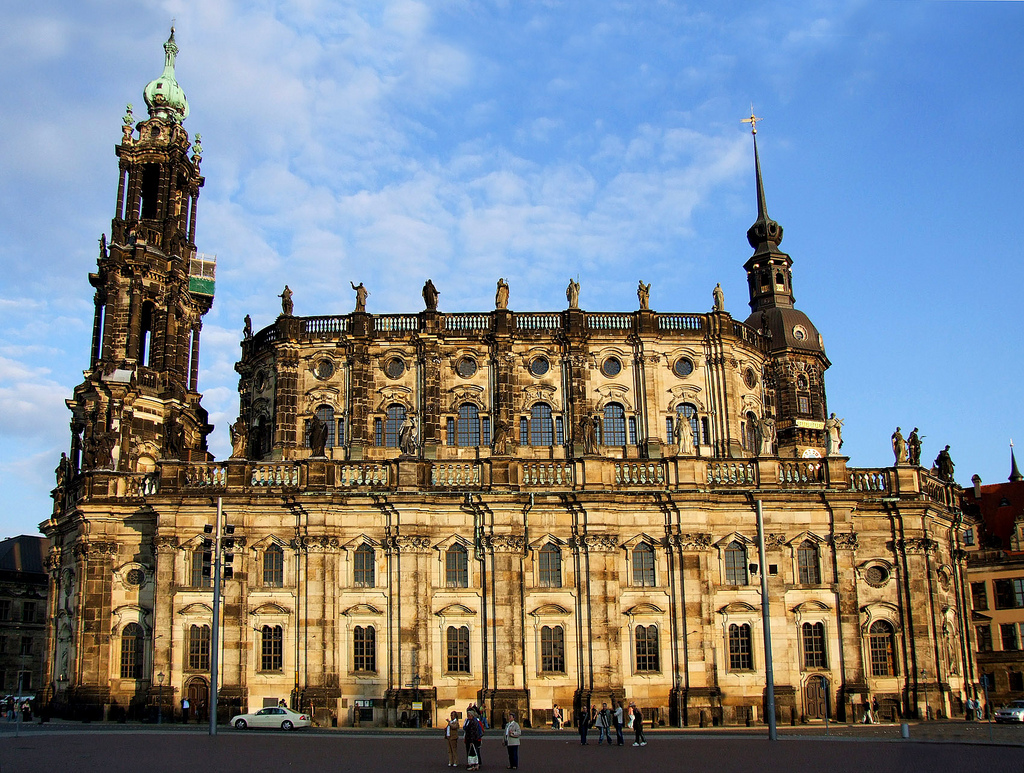
At first, it may seem that the dark spots on the structure are a sad reminder of the events of the 20th century. And the church truly suffered a lot from these events, but in fact, these spots appeared naturally. The point is that the building material is rich in iron salts, which oxidized because of atmospheric effects.
Hofkirche also stores an exact copy of the famous Trinity Icon by Andrei Rublev. It was gifted to the church by the Russian community living in Dresden.
Dresden State Opera
The Dresden State Opera is considered one of the most beautiful theaters not only in Germany but in the whole world. And it really fascinated us with its appearance: a high three-story building decorated with various dressings and sculptures, built in the Baroque style, like many buildings in the city.
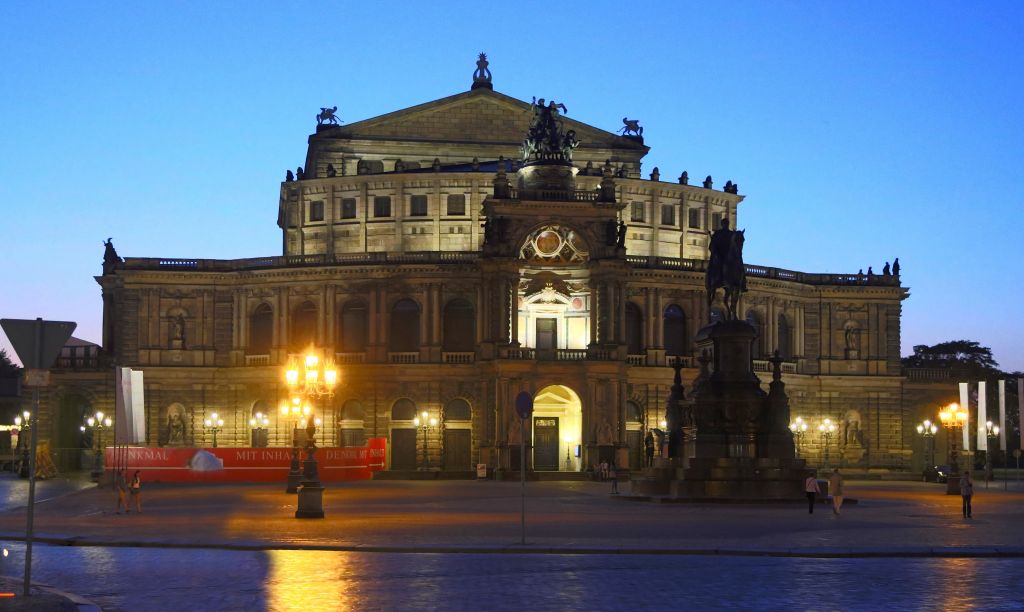
The opera was commissioned by King Frederick Augustus II of Saxony in the 19th century. And its founder is Gottfried Semper, after whom the opera got its second name – the Semperoper.
Yenidze, or the Tobacco Mosque
This building is perhaps the most unusual in Dresden. Initially, we, like many people who first see this building, mistook it for a mosque. However, in fact, Yenidze is a former tobacco factory.
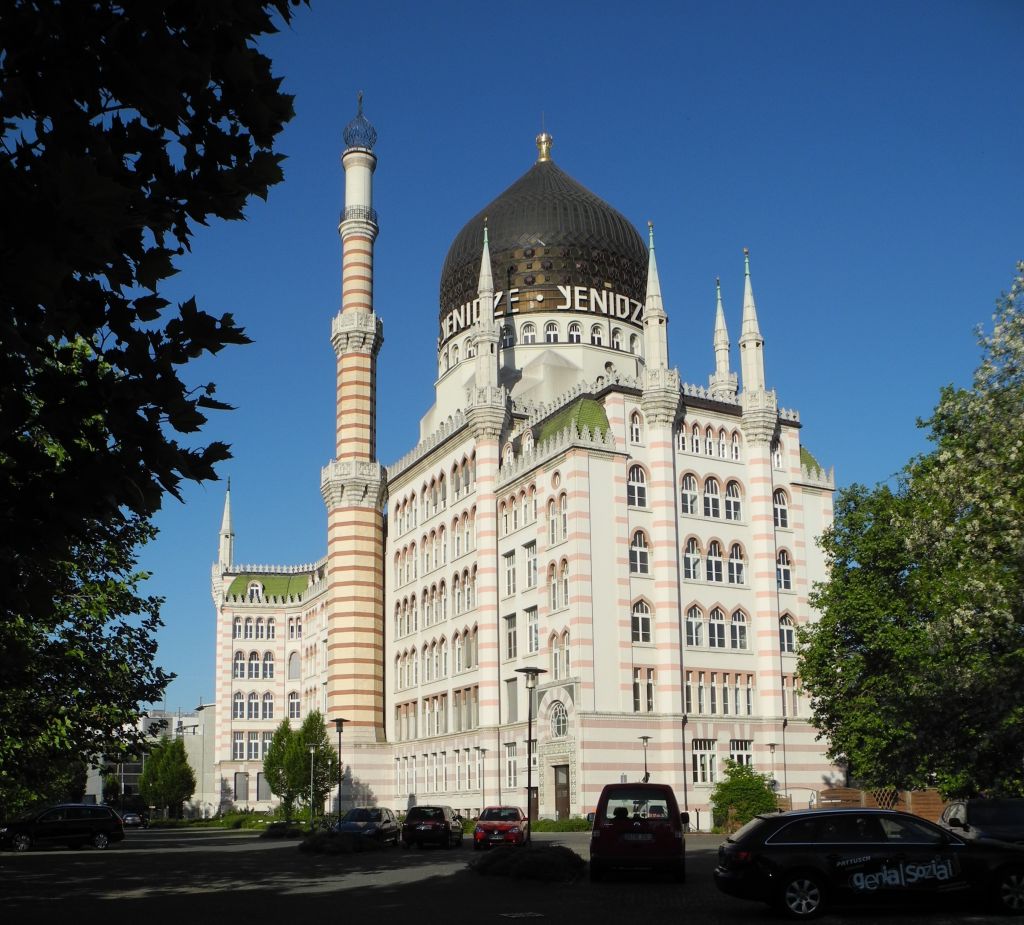
The point is that the founder of this factory was prohibited to build his own production building because it could spoil the city’s appearance. So the factory owner came up with a very unusual solution — he did build a factory but disguised it as a mosque.
The name of this “mosque” comes from a place in Greece, where the factory owner brought his tobacco.
“BrennNessel” Restaurant
In addition to admiring the magnificent buildings and streets in Dresden, you can also have a delicious meal here. We visited several restaurants in the city, but the “brennNessel” Restaurant was the most memorable for us.
This is a vegetarian restaurant, and its peculiarity is dishes of nettle. That is why the restaurant has this name as from German, Brennessel means “nettle”.
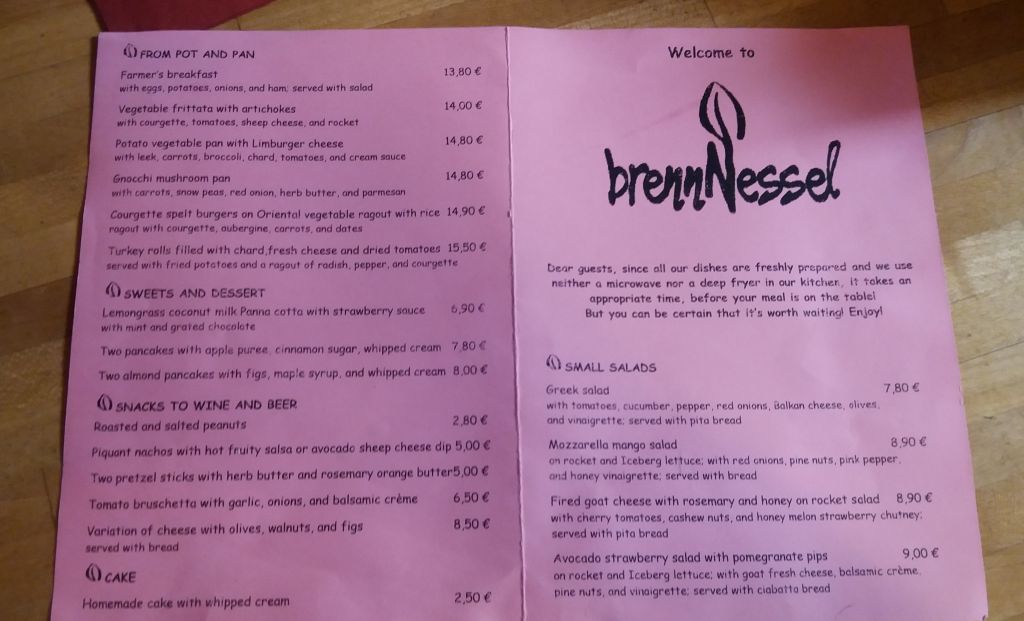
In addition to nettle dishes, the restaurant had many other dishes, which are rarely found in normal catering places. Overall, we brought only positive impressions of “brennNessel”.

“Pulverturm” Restaurant
Another restaurant that delighted us with its environment is “Pulverturm”. Back in the 16th century, there was a tower here, which stored gunpowder. Later, however, the gunpowder was moved to another place, and the tower was demolished. Nevertheless, we could see some of its remains even today.
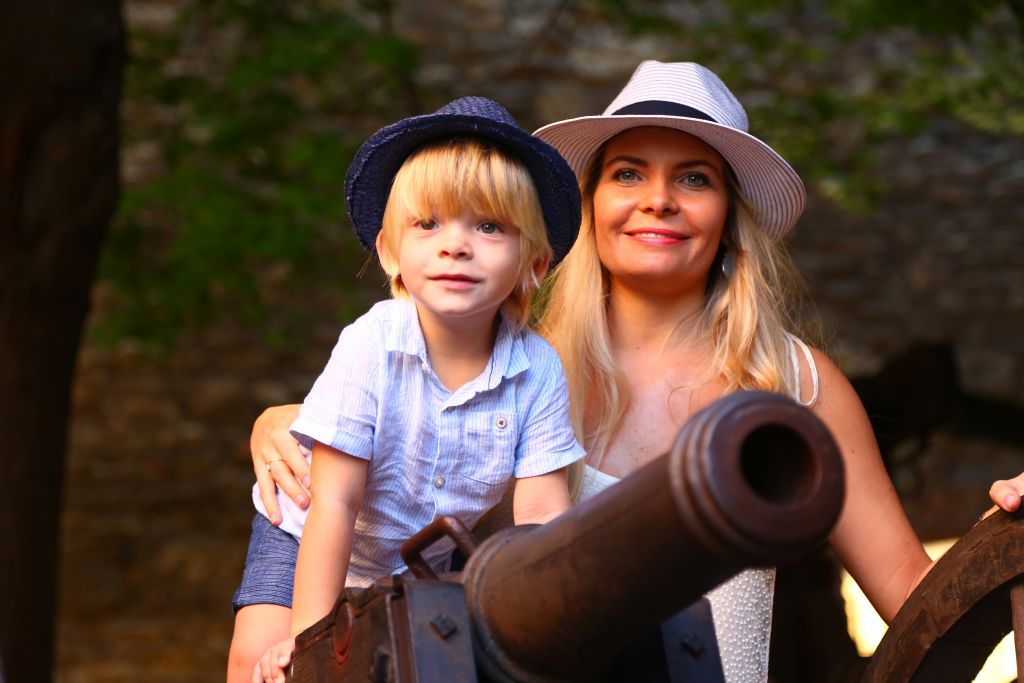
The interior of the restaurant is made in the style of the Middle Ages. Here, we could try German, Italian, Spanish, Russian and other kinds of cuisine. And right near the restaurant, there are several guns, which anyone could take photos with. And, of course, we did not miss this opportunity!
Leaving the City
Just before our departure, we heard the sound of banging in the city – it was wirework! That was how this wonderful city said goodbye to us.
Conclusion
Dresden has its own unique and rich history. Almost every building in the Old Town was made decades or even centuries ago. However, unlike other old cities, Dresden does not leave that very sense of antiquity. On the contrary, the full restoration has left its imprint on the city, and the antiquity seems unusual, new and rebuilt.
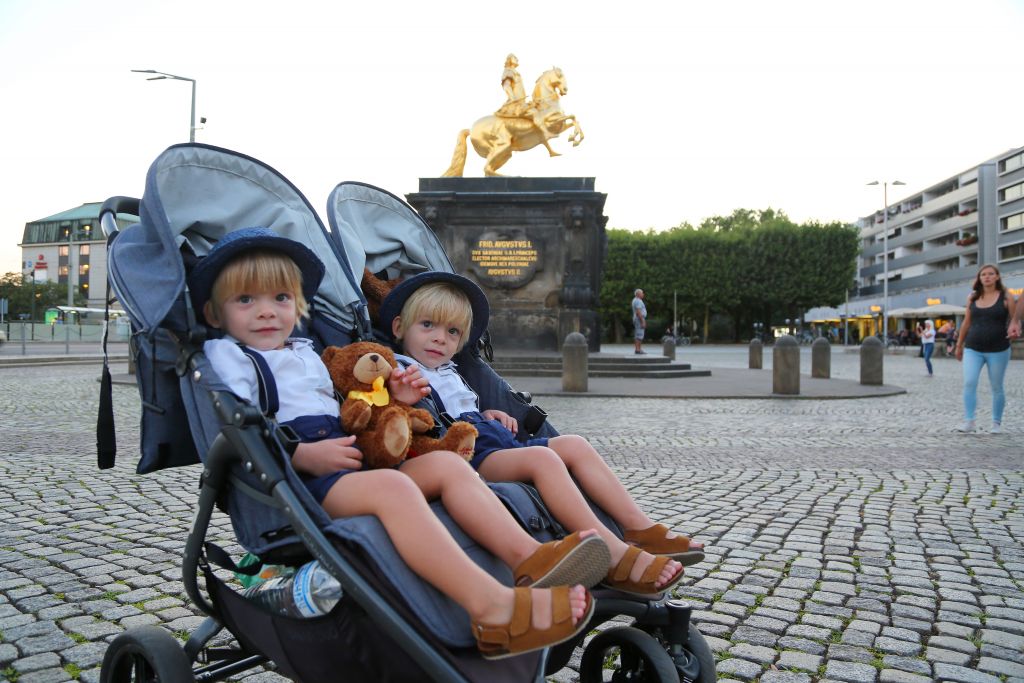

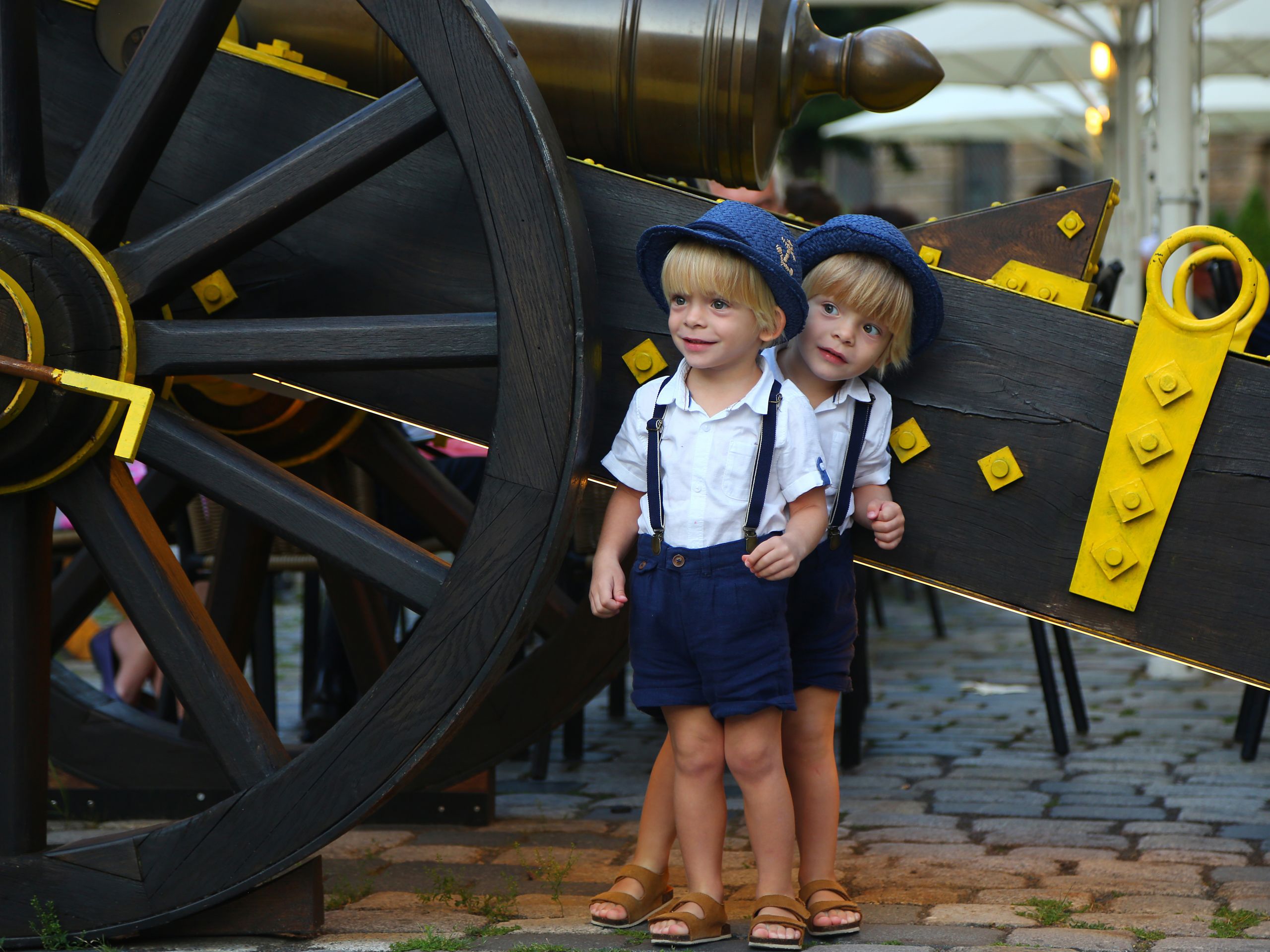
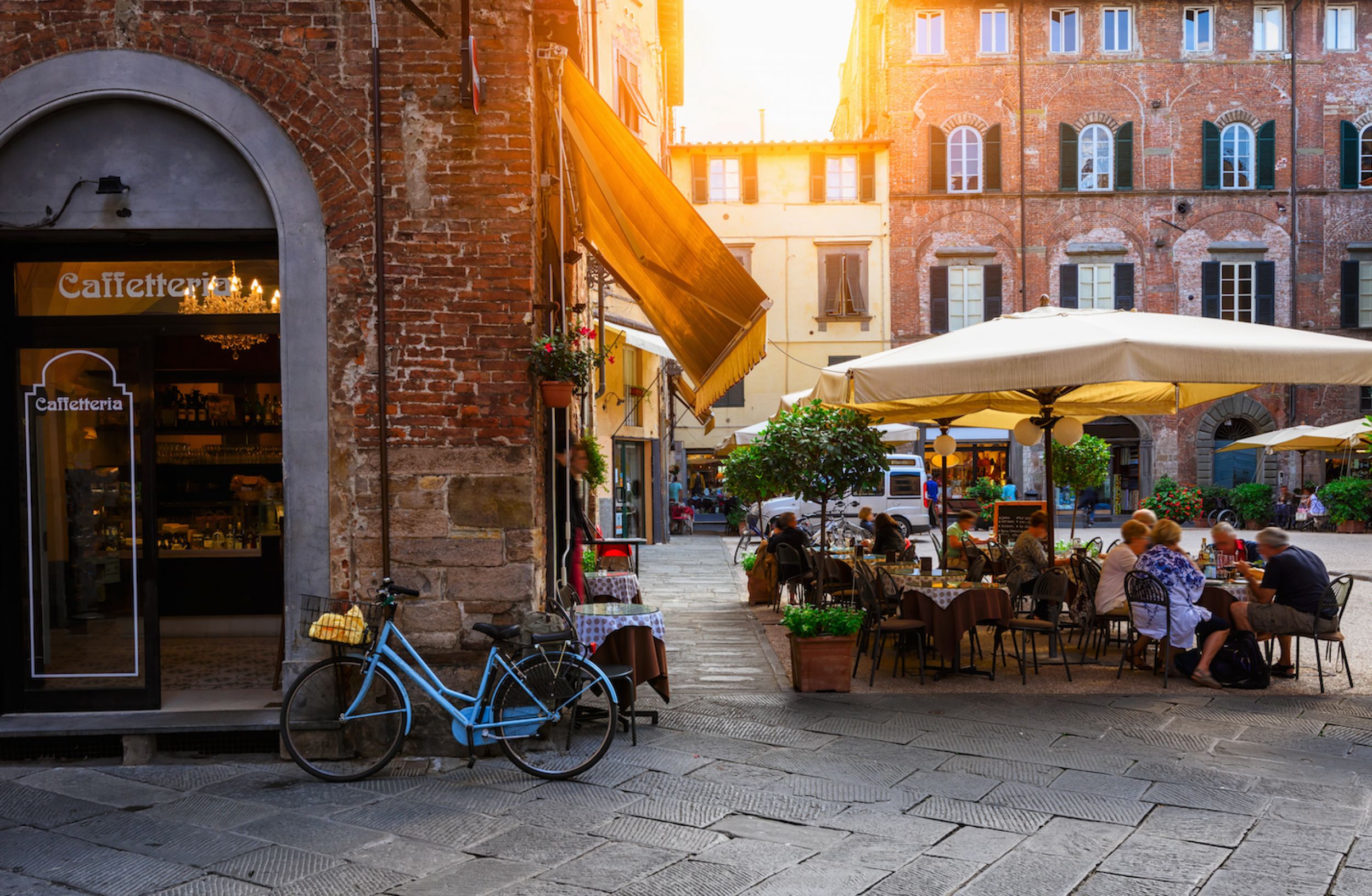


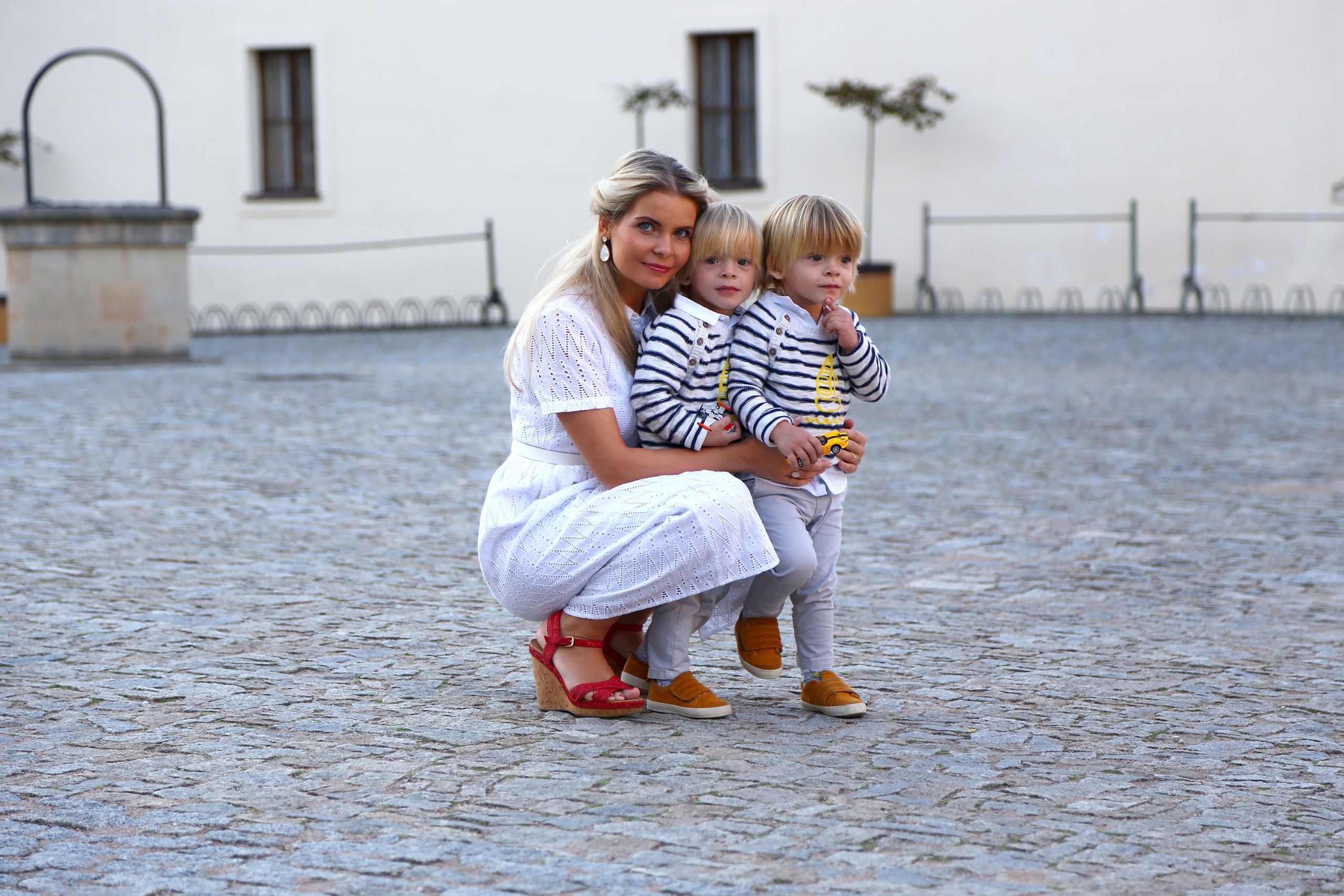
Leave A Comment